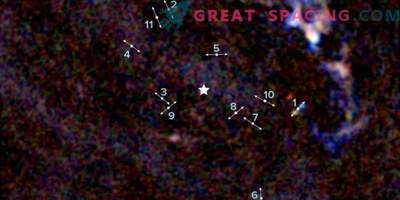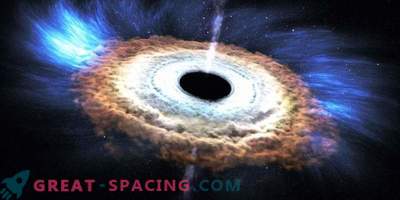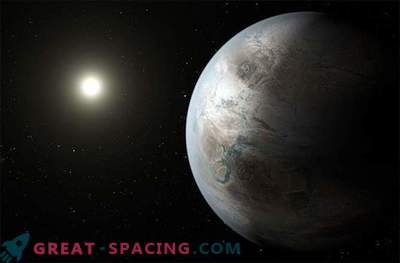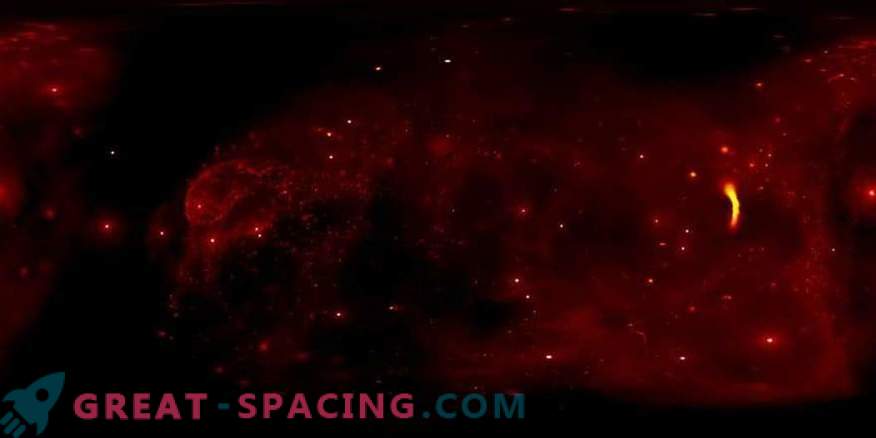
The new visualization provides an incredible virtual journey with a 360-degree view to the center of our galaxy. This project was created using data from the X-ray observatory of Chandra and other telescopes, which allows viewers to control their own exploration of the fascinating medium of massive stars and powerful gravity around a monstrous black hole lurking in the center.
The Earth is distant from the galactic center at 26,000 light years. People are not able to physically reach this point, but scientists were able to explore the area using information from various powerful telescopes that capture light in various forms.
This visualization is based on the infrared data of the Very Large Telescope. The information is obtained from 30 massive stellar giants - the Wolf-Rayet stars, rotating at a distance of 1.5 light years from the galactic center. The powerful winds of gas flowing from star surfaces transfer some of the outer layers to interstellar space.
When the released gas collides with a previously ejected from other stars, shock waves are formed that resemble sound arrows. They heat gas up to millions of degrees, which is why it starts to glow in X-rays.
360-degree video: immersion in the galactic center
Scientists are interested in realizing the role of Wolf Rayet stars in the space region of the Milky Way. It is especially interesting to understand how they are in contact with the supermassive black hole Sagittarius A *. By weight, it reaches 4 million solar.
The visualization of the center is a 360-degree film immersing the viewer into a simulation of the galactic center. You get to the location of Sagittarius A * and can see about 25 Wolf-Rayet stars, continuously displacing stellar winds (from black and red to yellow). The winds collide and spiral into the hole.
The film shows two simulations: Sagittarius A * in a quiescent state and a more active hole, displacing its material, disabling accretion. The researchers used visualization to study the effects of a hole on stellar neighbors. The powerful gravity of Sagittarius A * sucks in pieces of material, and tidal forces stretch the approximate clusters. Also, the hole acts on the neighborhood through random bursts.
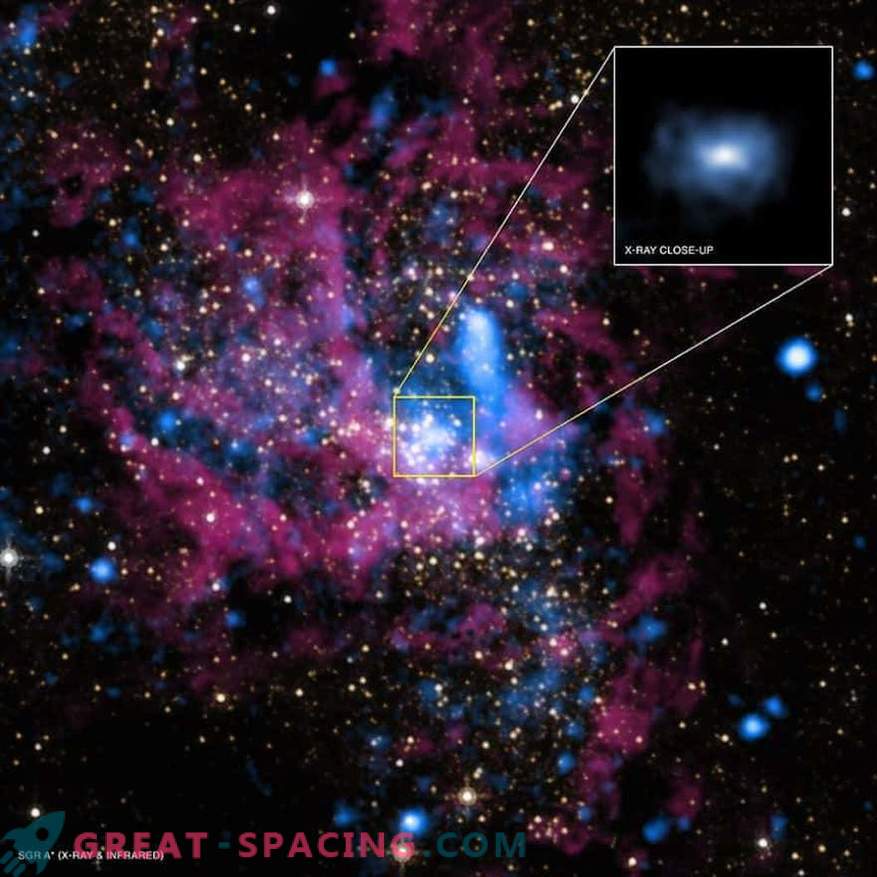
Scientists used imaging to understand the presence of disk-shaped x-rays previously found, extending 0.6 light years from the hole. The analysis showed that the amount of radiation generated by the colliding winds depends on the intensity of the flares activating Sagittarius A *, as well as the time since the eruption.
Information of theoretical models and comparison with the power of X-rays showed that Sagittarius A *, most likely, had a relatively powerful burst that began in the last few centuries. And the outbreak still affects the region around the hole, although it ended about 100 years ago.
A quick look at the galactic center
The 360-degree video looks perfect in 3D glasses. The video can also be viewed on the phone.




